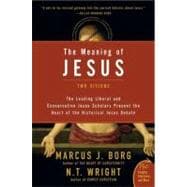Was Jesus born of a virgin? Did he know he was the Messiah? Was he bodily resurrected from the dead? Did he intentionally die to redeem humankind? Was Jesus God?
Two leading Jesus scholars with widely divergent views go right to the heart of these questions and others, presenting the opposing visions of Jesus that shape our faith today.
Two well-known theological scholars debate the most important biblical questions of the time and discuss what these differences mean for Christians today.









